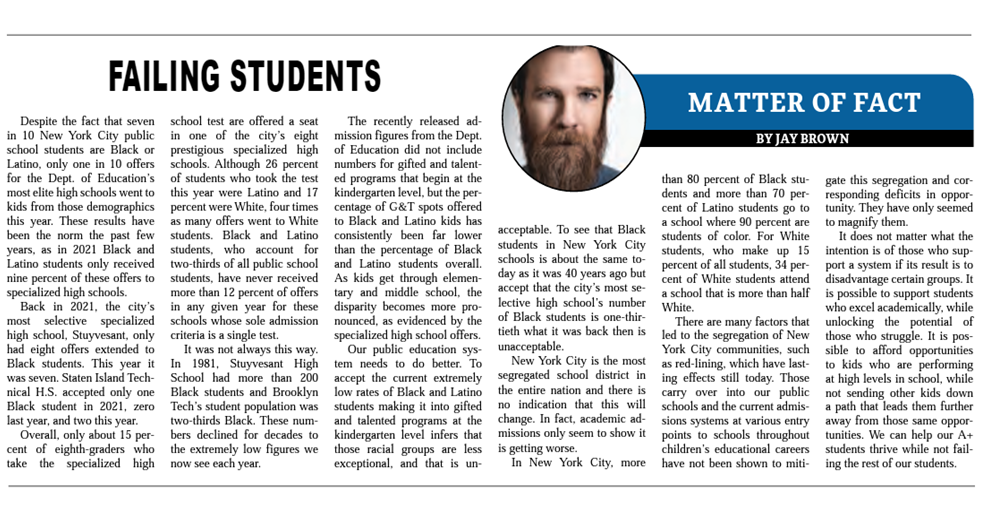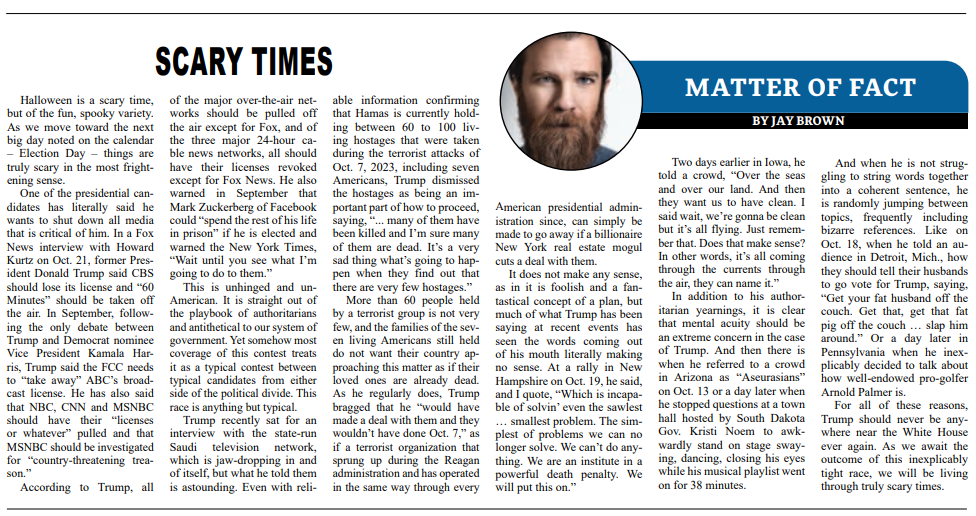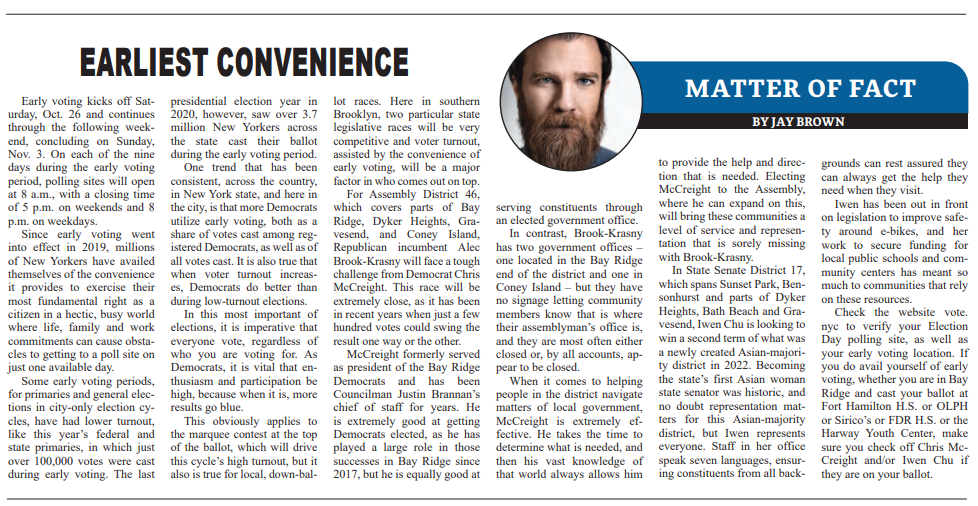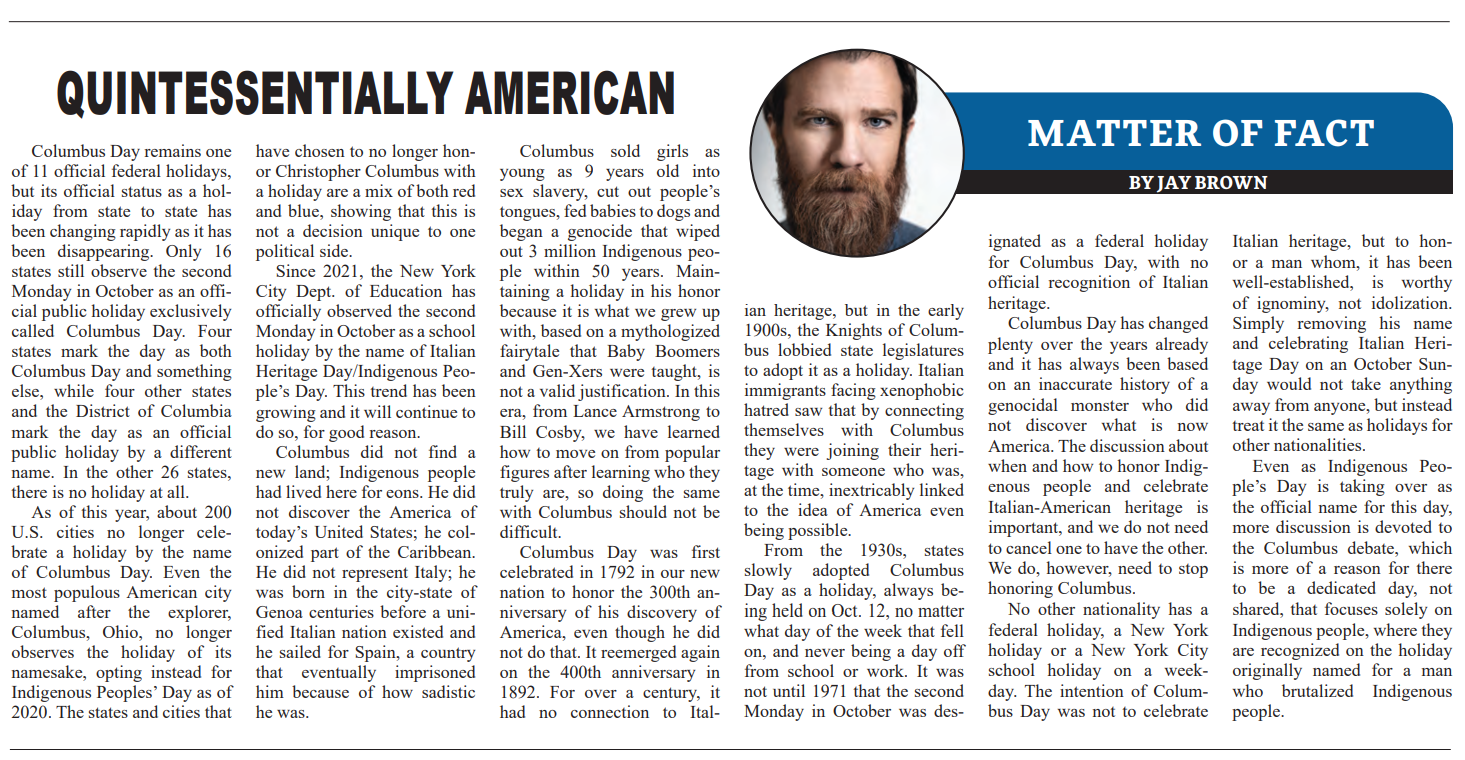This column, from the weekly opinion piece MATTER OF FACT, first appeared on BrooklynReporter.com, the Home Reporter and Spectator dated June 9, 2023
Despite the fact that seven in ten New York City public school students are Black or Latino, only one in ten offers for the Department of Education’s most elite high schools went to kids from those demographics this year. These results have been the norm the past few years, as in 2021 Black and Latino students only received nine percent of these offers to specialized high schools.
Back in 2021, the city’s most selective specialized high school, Stuyvesant, only had eight offers extended to Black students. This year, it was seven. Staten Island Technical High School accepted only one Black student in 2021, zero last year, and two this year.
Overall, only about 15 percent of eight graders who take the specialized high school test are offered a seat in one of the city’s eight prestigious specialized high schools. Although 26 percent of students who took the test this year were Latino and 17 percent were White, four times as many offers went to White students. Black and Latino students, who account for two-thirds of all public school students, have never received more than 12 percent of offers in any given year for these schools whose sole admission criteria is a single test.
It was not always this way. In 1981, Stuyvesant High School had more than 200 Black students and Brooklyn Tech’s student population was two-thirds Black. These numbers declined for decades to the extremely low figures we now see each year.
The recently released admission figures from the Department of Education did not include numbers for gifted and talented programs that begin at the kindergarten level, but the percentage of G&T spots offered to Black and Latino kids has consistently been far lower than the percentage of Black and Latino students overall. As kids get through elementary and middle school, the disparity becomes more pronounced, as evidenced by the specialized high school offers.
Our public education system needs to do better. To accept the current extremely low rates of Black and Latino students making it into gifted and talented programs at the kindergarten level, infers that those racial groups are less exceptional, and that is unacceptable. To see that Black students in New York City schools is about the same today as it was 40 years ago but accept that the city’s most selective high school’s number of Black students is one-thirtieth what it was back then is unacceptable.
New York City is the most segregated school district in the entire nation and there is no indication that this will change. In fact, academic admissions only seem to show it is getting worse.
In New York City, more than 80 percent of Black students and more than 70 percent of Latino students go to a school where 90 percent students of color. For White students, who make up 15 percent of all students, 34 percent of White students attend a school that is more than half White.
There are many factors that led to the segregation of New York City communities, such as red-lining, which have lasting effects still today. Those carry over into our public schools and the current admissions systems at various entry points to schools throughout children’s educational careers have not been shown to mitigate this segregation and corresponding deficits in opportunity. They have only seemed to magnify them.
It does not matter what the intention is of those who support a system if its result is to disadvantage certain groups. It is possible to support students who excel academically, while unlocking the potential of those who struggle. It is possible to afford opportunities to kids who are performing at high levels in school, while not sending other kids down a path that leads them further away from those same opportunities. We can help our A+ students thrive while not failing the rest of our students.




